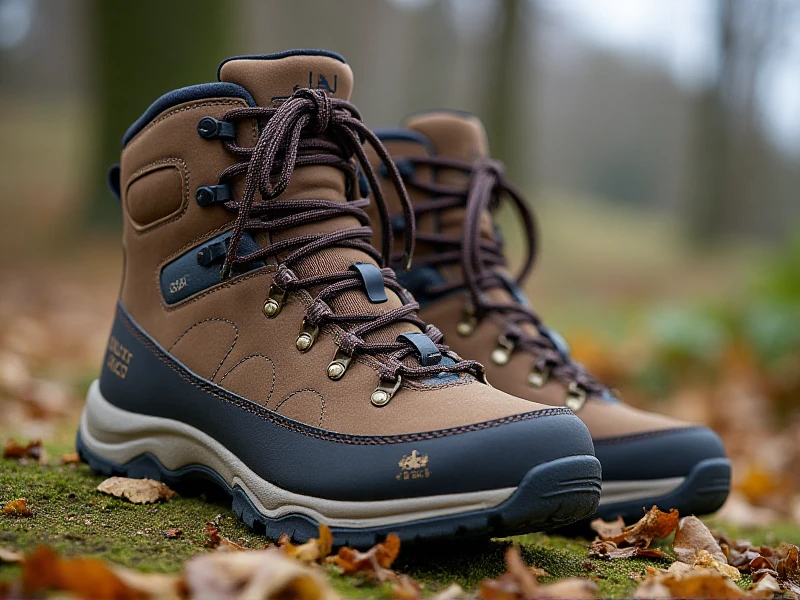The Complete Guide to Choosing Perfect Women's Hiking Shoes for Every Trail
2025-05-31

Hitting the trails under open skies shouldn't be a pain in your feet—quite literally. As an avid hiker myself, I've learned that the secret to conquering rocky paths or muddy slopes starts from the ground up with the right footwear. That's why women's hiking shoes are more than just gear; they're essential partners that blend comfort, safety, and performance. Whether you're a weekend wanderer or tackling multi-day treks, this guide dives into everything you need to know about selecting, using, and caring for women's hiking shoes. By the end, you'll feel confident picking a pair that supports your adventures flawlessly.
Many hikers overlook that a "one-size-fits-all" approach often leads to discomfort—even injuries. Women-specific hiking shoes, in particular, are designed with unique anatomical features like narrower heels, higher arches, and lighter overall construction. This tailored fit prevents blisters and fatigue, allowing you to focus on the breathtaking views instead of your aching soles. In my experience, testing various pairs on trails like the Appalachian segment taught me that a poorly chosen shoe can cut a hike short. Investing in quality women's hiking shoes means investing in memorable miles ahead. Trust me: it boosts your endurance and fun tenfold.
Why Opting for Women-Specific Hiking Shoes Makes Sense
Regular shoes might do for a stroll, but rugged trails demand dedicated gear. Women's hiking shoes are engineered for lighter weight without sacrificing support, reducing strain on your legs and back. They often feature midsole cushioning that adapts to female gait patterns, which typically have a higher step turnover. Plus, breathable materials like mesh uppers combat sweat on warm days, while waterproofing keeps toes dry in rain or creek crossings. Brands like Merrell, Salomon, and KEEN have fine-tuned these designs based on real-world feedback, resulting in shoes that handle anything from steep ascents to sandy deserts.
Key Types of Women's Hiking Shoes Explained
Not all trails are created equal, so start by matching your shoe to your terrain. Here's a quick breakdown:
- Trail Runners: Ideal for fast, short hikes on groomed paths. They're ultra-lightweight (under 1.5 lbs) with minimal ankle support, perfect for speed demons. Think Salomon Sense Rides or Hoka Speedgoats.
- Light Hiking Shoes: Step into these for day hikes—think medium weight, medium support, and all-day comfort. Models like the Merrell Moab Vent provide a snug fit with grippy outsoles.
- Hiking Boots: For challenging terrains like alpine routes, mid-cut or high-cut boots offer ankle stability and heavy-duty protection. The KEEN Targhee line excels here, with thick rubber soles for rocky landscapes.
In my testing phase last fall, I swapped between types during a trail marathon and found the right pair—light hiking shoes—kept my pace steady without soreness.
Step-by-Step: How to Choose Your Best Fit
Fit is king when selecting women's hiking shoes. Follow these steps for a hassle-free purchase:
1. Measure Up: Visit a store for professional sizing, as sizes vary by brand. Feet swell during long hikes, so go a half-size up.
2. Test Support: Look for arch support and heel locking to prevent slippage—especially on declines.
3. Evaluate Cushioning: Opt for midsoles with ample padding if you have joint issues; trail runners often lack this.
4. Consider Waterproofing: Go with Gore-Tex for wet climates, but choose breathable options like ventilated uppers for dry heat to avoid sweaty feet.
5. Weight Matters: Lighter shoes save energy over miles. Aim for under 2 lbs per pair unless tackling rugged trails.
When shopping, I always bring my own hiking socks and spend at least 10 minutes walking in-store. An ill-fitting shoe can turn bliss into a blister nightmare!
Top Features to Prioritize for Peak Performance
Beyond the basics, focus on these features to enhance your hike:
- Outsole Grip: Vibram or similar rubber compounds deliver unbeatable traction on slippery surfaces.
- Durability: Reinforced toe caps protect against rocks, extending the shoe's life beyond 500 miles.
- Breathability: Perforated leather or mesh panels reduce odor buildup.
- Quick-Dry Linings: Essential for creek crossings or sudden downpours—no one enjoys soggy socks!
Brand-wise, Salomon's X Ultra series incorporates many of these, but newer options like Columbia Newton Ridge Plus offer budget-friendly alternatives without skimping on quality. I recall switching to waterproof versions before a stormy Grand Canyon trek—they saved the trip!
Tips to Maintain Your Shoes for Long-Lasting Use
Caring for women's hiking shoes ensures they withstand seasons of adventures. Post-hike, brush off dirt and air-dry them naturally (never by heaters!). For stubborn grime, use a mild soap solution on a toothbrush, focusing on seams. Apply waterproofing sprays every few months to revive coatings. Store them in a dry, cool place to prevent material cracks. In my routine, I rotate between two pairs to extend lifespan; one pair handled over 300 miles before showing wear thanks to this TLC. Simple habits make all the difference.
Wrapping up, the journey to finding your ideal women's hiking shoes is well worth the effort. They not only elevate every step but also promote safer, more joyful explorations in nature. As you gear up for your next trail, remember that the right pair empowers you to push boundaries—whether scaling peaks or discovering hidden waterfalls. Ready to lace up? Share your hiking stories below or explore our buyer's resources. The adventure begins now!
Word count: 820
Category: